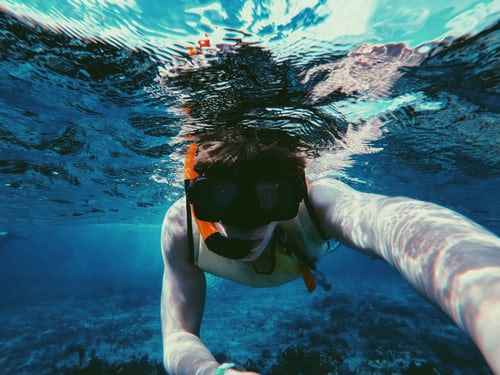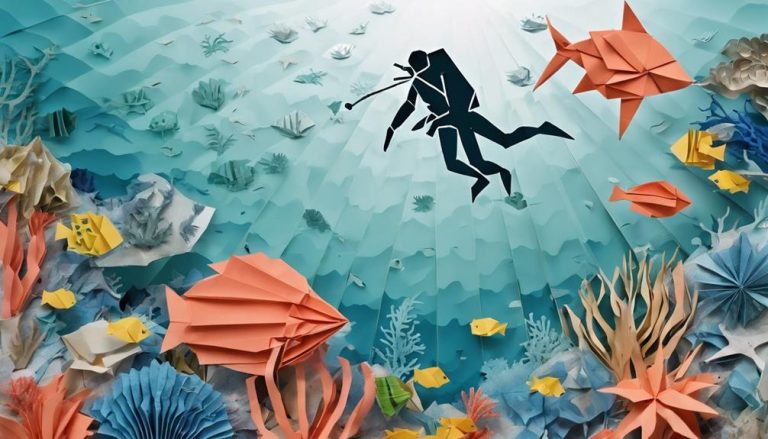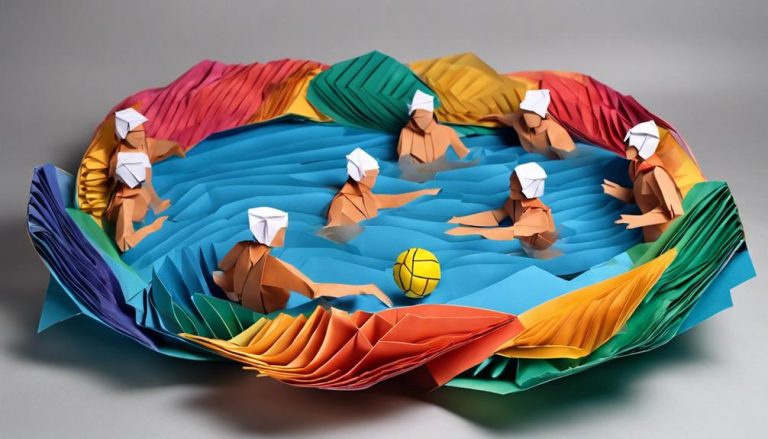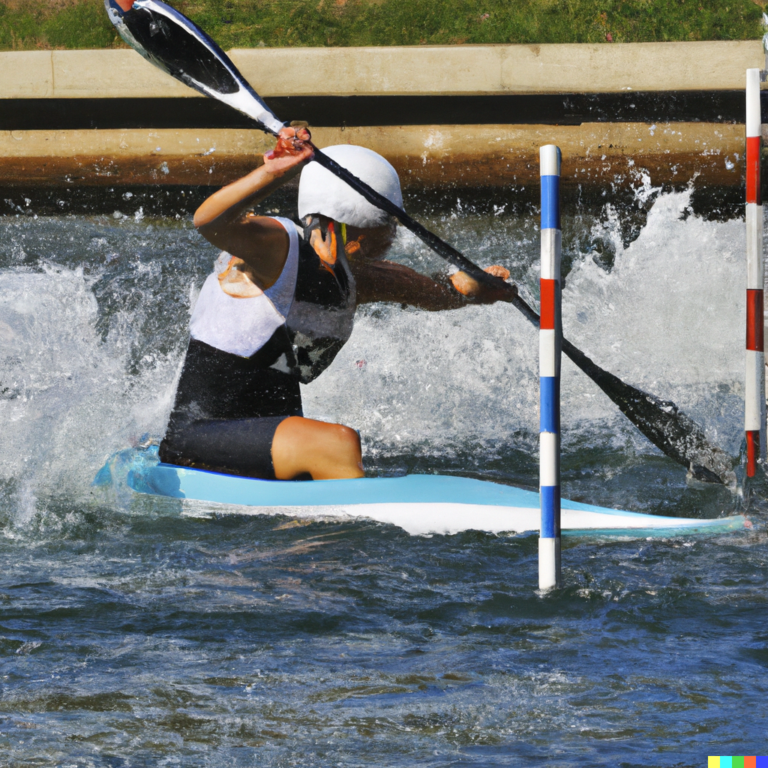General Rules of Underwater Fishing
Have you ever wondered what lies beneath the surface when you venture into the depths for a day of underwater fishing?
Safety precautions, equipment requirements, fishing regulations, conservation practices, dive planning, and species identification are all crucial components of this immersive experience.
Understanding these general rules will not only enhance your success as an underwater angler but also contribute to the overall sustainability of marine ecosystems.
Safety Precautions
When diving underwater for fishing, it's essential to follow safety precautions to ensure a secure and successful experience. This includes being well-versed in emergency procedures and diving signals. Emergency procedures are crucial for any underwater activity, and knowing how to handle potential dangers can make a significant difference in your safety. Familiarize yourself with diving signals to communicate effectively with your dive buddy and others in the vicinity. Understanding these signals can help prevent confusion and ensure smooth coordination during the dive.
Utilizing the buddy system is another fundamental safety measure when engaging in underwater fishing. Having a dive buddy provides an extra layer of security, as you can watch out for each other and offer assistance if needed. Before entering the water, establish clear communication and agree on emergency protocols with your buddy. This partnership enhances safety and allows for quick responses in case of unforeseen circumstances.
Moreover, always pay attention to dive flags when underwater fishing. Dive flags signal your presence to boats and other watercraft, reducing the risk of accidents. Make sure to display the appropriate dive flag based on your activity, whether it's diving from a boat or shore. Respect the dive flags of others and maintain a safe distance to avoid any potential conflicts or dangers while underwater. Adhering to these safety precautions will help you enjoy your underwater fishing experience while minimizing risks.
Equipment Requirements
To ensure safety and efficiency during underwater fishing, specific equipment requirements must be met. Gear maintenance and proper storage are crucial aspects to prolong the lifespan of your equipment. Regularly inspecting your gear for any signs of wear and tear is essential to prevent malfunctions while underwater. Properly storing your equipment in a dry and cool environment can help prevent corrosion and damage from exposure to elements like saltwater.
Equipment customization and personalization play a significant role in enhancing your underwater fishing experience. Customizing your equipment to suit your specific needs and preferences can greatly improve your comfort and performance while underwater. Whether it's adjusting the length of your speargun or customizing your weight belt for better buoyancy control, personalized equipment can make a significant difference in your success as an underwater angler.
Investing time and effort into maintaining and customizing your equipment won't only improve your underwater fishing skills but also ensure your safety during dives. By adhering to these equipment requirements and incorporating gear maintenance and customization practices into your routine, you can elevate your underwater fishing experience to new heights.
Fishing Regulations
Proper adherence to fishing regulations is imperative for maintaining ecological balance and ensuring sustainable underwater fishing practices. These regulations are put in place to safeguard marine ecosystems and prevent overexploitation of fish populations. Key aspects of fishing regulations include catch limits and size restrictions. Catch limits specify the maximum number of fish that can be caught per person, per day, helping prevent depletion of fish stocks. Size restrictions dictate the minimum size at which certain species can be harvested, allowing fish to reach maturity and reproduce before being caught.
Moreover, licensing requirements are essential to monitor and control fishing activities. Obtaining a fishing license ensures that individuals are knowledgeable about the rules and regulations governing underwater fishing. It also aids authorities in tracking the number of active fishers and enforcing compliance with catch limits and size restrictions. Enforcement efforts play a crucial role in upholding fishing regulations. Fisheries management agencies and conservation organizations work together to monitor fishing activities, conduct inspections, and penalize those who violate regulations.
Conservation Practices
Adhering to established conservation practices is crucial for maintaining the health and sustainability of underwater ecosystems. By following sustainable fishing practices, you can contribute to the preservation of marine habitats and the delicate balance of life within them. Here are three key ways you can actively participate in the conservation of underwater ecosystems:
- Selective Fishing: Opt for selective fishing methods that target specific species rather than using indiscriminate techniques that can harm non-targeted species and their habitats. By avoiding destructive practices such as bottom trawling, you help protect the marine environment from unnecessary damage.
- Proper Waste Disposal: Dispose of any waste, such as fishing lines, hooks, or plastic materials, responsibly. Improperly discarded items can entangle marine life and cause harm to their habitats. By ensuring that all waste is properly disposed of, you help maintain a clean and safe environment for underwater species to thrive.
- Respect Fishing Regulations: Stay informed about fishing regulations in your area and abide by them diligently. These regulations are designed to prevent overfishing, protect vulnerable species, and conserve marine habitats. By following these rules, you play a vital role in safeguarding the underwater ecosystems for future generations to enjoy.
Dive Planning
When planning your dive, consider the depth, duration, and potential risks involved in order to ensure a safe and successful underwater experience. The buddy system is crucial for safety; always dive with a partner to provide assistance in case of emergencies. Establishing depth limits before the dive is essential to prevent decompression sickness. Remember, the deeper you go, the shorter your allowable dive time due to increased nitrogen absorption.
Weather conditions and visibility levels play a significant role in dive planning. Check the weather forecast to ensure calm seas and minimal chances of storms, which could pose dangers during your dive. Poor visibility can disorient you underwater, making it harder to navigate and locate your dive buddy. Plan dives during times of better visibility to enhance safety and enjoyment.
Calculating your dive duration is vital to prevent running out of air or exceeding safe limits. Monitoring your air supply and bottom time ensures you return to the surface with a sufficient air reserve and avoid decompression sickness. Proper dive planning accounts for potential risks such as equipment failure, marine life encounters, and changing underwater conditions. By meticulously planning your dive using the buddy system, adhering to depth limits, and considering weather conditions and visibility levels, you can enhance safety and maximize your underwater fishing experience.
Species Identification
Consider the importance of accurately identifying various species of marine life to enhance your underwater fishing knowledge and experience. Proper species identification is crucial for several reasons:
- Fish Behavior and Identification: Understanding the behavior and characteristics of different fish species is essential for successful underwater fishing. Each species has unique habits, feeding patterns, and responses to bait. By accurately identifying the species you encounter, you can adapt your fishing techniques accordingly, increasing your chances of a successful catch.
- Environmental Impact and Conservation: Incorrectly identifying a species can lead to unintended harm to the marine ecosystem. Some species may be endangered or protected, and catching them could have severe consequences. By being able to identify various marine life accurately, you can make informed decisions about which species are safe to target and which should be left undisturbed to support conservation efforts.
- Enhancing Overall Experience: Accurately identifying different species of marine life adds depth and richness to your underwater fishing experience. It allows you to appreciate the diversity of marine ecosystems and fosters a deeper connection with the underwater world. The more you know about the species you encounter, the more fulfilling and educational your fishing expeditions will become.
Frequently Asked Questions
Can I Use Scuba Diving Equipment for Underwater Fishing or Do I Need Specialized Gear?
You can use scuba diving equipment for underwater fishing, but specialized gear for safety and efficiency is recommended. Consider your dive buddy, spear gun requirements, and the specific conditions of your location for a successful experience.
Are There Any Specific Techniques for Attracting Fish While Underwater Fishing?
To attract fish while underwater fishing, consider bait selection based on fish behavior. Understand how visibility and ocean currents impact fish movement. Use these insights to strategically position yourself and entice fish with the right bait.
How Do I Know if a Fish I Catch Is Safe to Eat?
When catching fish underwater, ensure safety for consumption by checking mercury levels. Cook fish thoroughly to kill bacteria. To confirm safety, follow guidelines from local health departments or fishing authorities. Enjoy your meal!
What Are Some Common Hazards to Watch Out for While Underwater Fishing?
When underwater fishing, be cautious of hazards like limited underwater visibility, unpredictable marine life interactions, changing weather conditions, and the importance of regular equipment maintenance. These factors can impact your safety and overall experience.
Is There a Limit to How Many Fish I Can Catch While Underwater Fishing, and How Is This Enforced?
You might wonder about catch limits while underwater fishing. Regulations set these limits to ensure sustainable fishing. Enforcement methods vary, including patrols, monitoring technology, and penalties for violations. Scuba gear and snorkeling are common alternatives.






